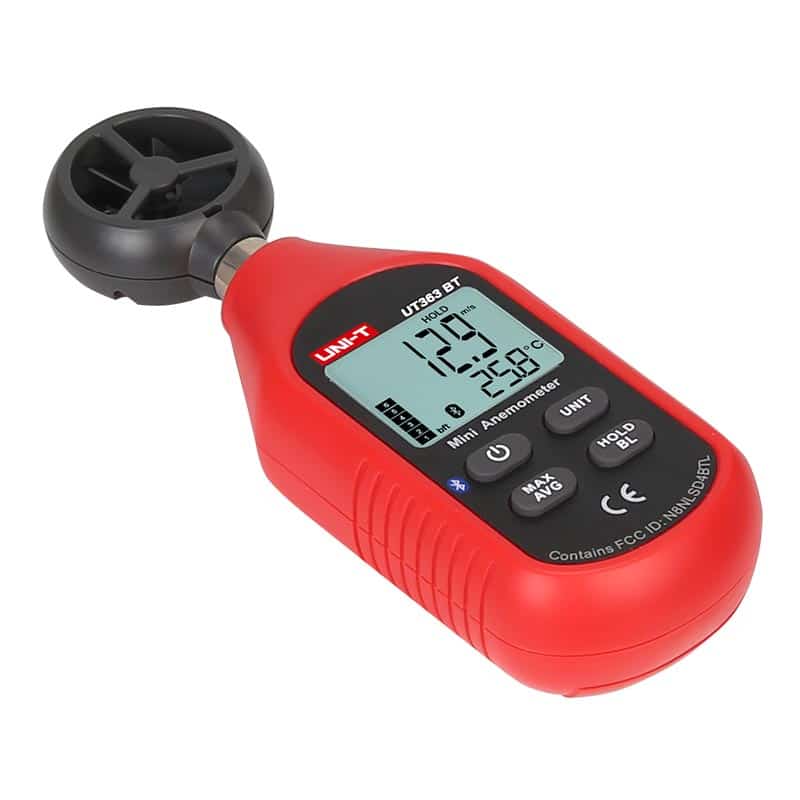Selecting the Right Anemometer: A Comprehensive Acquiring Overview
Selecting the Right Anemometer: A Comprehensive Acquiring Overview
Blog Article
Checking Out the Functions and Benefits of Anemometers for Climate Fanatics and Experts
Anemometers stand as instrumental devices in the realm of climate surveillance, catering to both fanatics and seasoned professionals alike. These tools use a home window into the vibrant world of wind patterns and speeds, offering important data for atmospheric analysis and forecasting. From mug anemometers to sonic anemometers, each type brings its special set of benefits and applications, shedding light on different elements of climatic problems. As we explore the functions and benefits of anemometers, a deeper understanding emerges not just of dominating weather condition phenomena yet additionally of the wider implications for industries like wind energy manufacturing and ecological research study.
Significance of Anemometers in Weather Condition Monitoring
Anemometers play a crucial duty in weather monitoring by supplying exact measurements of wind speed, helping in projecting and understanding climate patterns. These instruments, varying from conventional cup anemometers to contemporary ultrasonic anemometers, are necessary for meteorologists, scientists, and climate fanatics alike.

Kinds Of Anemometers and Their Applications
With the essential function anemometers play in climate surveillance and projecting, understanding the various sorts of these instruments and their applications comes to be vital for professionals and fanatics in the area. The most typical kinds of anemometers include mug anemometers, vane anemometers, hot-wire anemometers, and ultrasonic anemometers. Mug anemometers are composed of 3 or 4 mugs placed on straight arms that rotate with the wind, determining its speed. Vane anemometers, on the various other hand, make use of a freely rotating vane to straighten with the wind direction, providing both wind rate and instructions dimensions. Hot-wire anemometers run based upon the principle of convective heat transfer, where the cooling impact of the air circulation is gauged to identify wind speed. Ultrasonic anemometers utilize ultrasonic audio waves to determine wind speed and instructions accurately.
Cup anemometers are suitable and robust for general climate tracking, while vane anemometers are favored for directional measurements. Ultrasonic anemometers are non-intrusive and offer high accuracy, frequently used in research and specialized climate tracking applications.
Advantages of Using Anemometers in Forecasting
In weather forecasting, the use of anemometers uses very useful benefits for improving the accuracy of weather forecasting. Anemometers gauge wind rate and instructions, supplying important data for predicting weather patterns. By including wind information into forecasting versions, meteorologists can much better comprehend the movement of climate systems, prepare for modifications in website here weather, and concern much more precise projections.
Additionally, anemometers play a crucial role in assessing possible weather condition dangers. Monitoring wind rates assists forecasters predict serious weather occasions such as typhoons, tornadoes, and winter months storms with better accuracy. This very early warning system enables authorities to provide timely informs and execute essential security measures, minimizing the risks to life and property.
In addition, anemometers assist in enhancing renewable resource manufacturing. By analyzing wind patterns, meteorologists can determine suitable places for wind ranches and predict energy result, contributing to the effective generation of wind power.

Anemometers in Wind Power Manufacturing
Given the vital function anemometers play in supplying exact wind information for weather forecasting and risk assessment, their relevance includes the world of wind power manufacturing. Anemometers are important instruments in the field of wind energy, where the measurement of wind speed and direction is vital for establishing the feasibility and efficiency of wind turbine installations. By accurately measuring wind speeds at varying heights, anemometers aid maximize the positioning and style of wind turbines to maximize energy outcome.
In wind farms, anemometers are strategically placed to collect real-time wind data that is used to assess the potential power manufacturing of a website. This information is critical in figuring out the economic practicality of wind energy projects and in projecting power generation to make sure grid stability. Additionally, anemometers help in checking wind problems to enhance wind turbine performance, protect against damages from high winds, and make sure the safety of personnel operating in the area of wind turbines.
Enhancing Weather Understanding With Anemometers

Anemometers play an essential function in improving our understanding of microclimates. These localized climate condition can differ significantly from more comprehensive local projections, making it necessary to have precise data for particular areas. anemometer. By strategically positioning anemometers in numerous places, researchers can collect thorough details on exactly how wind behaves in various surfaces, metropolitan environments, or bodies of water
Moreover, anemometers add to enhancing weather forecasting versions by offering real-time data on wind behavior. This info is particularly beneficial for anticipating severe climate events, optimizing farming methods, and supporting markets like aviation and maritime navigating. Generally, anemometers are important tools that enable us to dive deeper into the intricacies of weather systems, inevitably resulting in even more precise forecasts and better-informed decisions.
Conclusion
To conclude, anemometers play an essential function in weather monitoring and projecting by determining wind speed and direction. They are essential devices utilized by climate lovers and experts to gather exact data for anticipating climate patterns and examining possible impacts. Anemometers additionally have applications in wind power manufacturing, more highlighting their importance check out here in both weather forecasting and renewable resource fields. Overall, anemometers add to boosting our understanding of weather phenomena and enhancing projecting capacities. anemometer.
From cup anemometers to sonic anemometers, each kind brings its distinct set of advantages and applications, shedding light on various aspects of atmospheric conditions. These instruments, ranging from conventional cup anemometers to contemporary ultrasonic anemometers, are crucial for meteorologists, researchers, and weather enthusiasts alike. The most common types of anemometers include cup anemometers, vane anemometers, hot-wire anemometers, and ultrasonic anemometers. Cup anemometers are robust and suitable for basic climate surveillance, while vane anemometers are preferred for directional dimensions. Anemometers are necessary tools in the area of wind power, my latest blog post where the dimension of wind speed and direction is essential for identifying the expediency and effectiveness of wind turbine installations.
Report this page